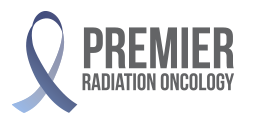FAQs
Consultation to after treatment, we have you coveredWhat To Expect on Your Visit
Facing a new cancer diagnosis or treatment option can be a challenging time. We are here to help. Some of our staff have themselves faced cancer diagnoses; we understand the uncertainty of this time and the need to move quickly to formulate the best plan of action. The following are typical steps when planning for radiation therapy:
Consultation
Dr. Engelman and his team review all clinical information and personally examine any imaging before you set foot in the office. Frequently, Dr. Engelman has already spoken to your referring physician before your initial visit. During this first visit you will review the data, discuss staging and prognosis, and review all treatment options including specifics particular to your case. Dr. Engelman takes pride in making himself available to you and spending as much time as needed to answer questions and clarify options during one of the most difficult times of a cancer diagnosis – the time between diagnosis and starting treatment.
Simulation
After your consultation, if you decide radiation treatment is right for you, you will return for a radiation planning scan called a simulation during which time molds of the body, temporary skin marks, tattoos, or other devices may be employed to allow for the most precise positioning and targeting possible.
Treatment Planning
After simulation Dr. Engelman uses the CT scan and any other scans such as MRIs or PET scans to outline both the areas that need treatment and the healthy organs that need to be avoided. He and his team then determine the safest paths for radiation delivery and sculpt the radiation dose in 3-D to comprehensively cover the area requiring treatment while sparing the normal tissues.
Daily Treatment
Through our use of state-of-the-art Image Guided Radiation (IGRT), we verify before each and every treatment that the areas that need radiation receive it while the areas that do not can be avoided. This may mean that you are asked to have a routine before treatment such as drinking water to fill your bladder or using the restroom to avoid excess gas. We confirm that the internal anatomy is ideal to receive treatment through the IGRT process and will never deliver a treatment unless it will be both safe and effective.
The treatment itself does not hurt and there is no radiation that you take home with you; you are safe to be around loved ones and they are safe to be around you. Our patients drive themselves and stay active in all their interests. Unlike chemotherapy, radiation only works where we aim it and the side effects are limited to the areas being treated. Side effects of treatment build up gradually over the course of therapy and typically go away with time. The specific side effects of treatment depend on the area of the body receiving radiation.
After Treatment
Patients are followed closely in the initial period after treatment and then are seen less frequently as time goes on. Monitoring for the results of therapy usually takes time after completing treatment and may involve blood work, imaging, or both. Your follow-up appointments will be coordinated with the other doctors participating in your care. We share records electronically with all referring physicians and your primary care doctor.
